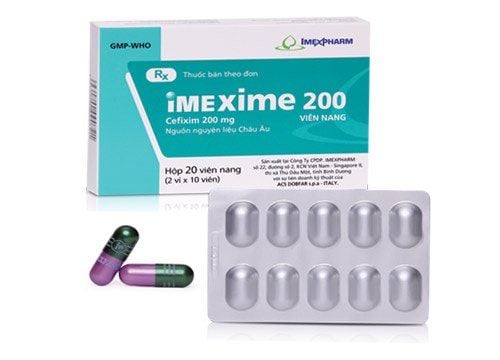This is an automatically translated article.
The article was professionally consulted with Master, Doctor Nguyen Nam Phong - Pediatrician - Department of Pediatrics - Neonatology - Vinmec Phu Quoc International General Hospital.Cavernous sinus thrombosis is the formation of a blood clot in the cavernous sinus, a cavity at the base of the brain that drains deoxygenated blood from the brain back to the heart.
1. What is cavernous sinus thrombosis?
The cavernous sinuses are hollow sinuses with a raft structure at the base of the skull that drain blood from the facial veins. Cavernous sinus thrombosis is a blood clot in the cavernous sinus that can be life-threatening. Blood clots can develop when an infection in the face or skull spreads to the cavernous sinuses. A blood clot forms to prevent the infection from spreading further, but it can restrict blood flow from the brain, which can damage the brain, eyes, and the nerves that run between them. Sometimes, blood clots can develop without an infection. This is a very rare complication of common facial infections, most notably nasal acne (50%), sphenoid or ethmoid sinusitis (30%), and oral infections (10%). Most common pathogens are Staphylococcus aureus (70%), followed by Streptococcus sp; Anaerobic bacteria are more common in dental or sinus infections.Cavernous sinus thrombosis is more common in people taking certain medications such as birth control pills or those with underlying health conditions such as uncontrolled diabetes or cancer that can increase the risk of blood clots bronze .

2. Signs of cavernous sinus thrombosis
Symptoms of cavernous sinus thrombosis may include:Severe headache often accompanied by watery eyes Swelling, redness, or irritation around one or both eyes Eyelid drooping Eye paralysis High fever Pain or numbness around the face or Eyes Fatigue Loss of vision or double vision Convulsions Altered mental status which can range from confusion to coma
3. Diagnostic test for cavernous sinus thrombosis
Doctors may order brain scans, including CT scans and MRIs, to look for cavernous sinus thrombosis. They may also test blood or spinal fluid to check for signs of infection.
4. Treatment of cavernous sinus thrombosis
Contact your doctor if you experience a persistent and severe headache that you have never had before, or if you have eye pain or swelling in one or both eyes. Although it is very unlikely to be the result of a cavernous sinus thrombosis, a persistent headache often needs to be checked. If you've been diagnosed with cavernous sinus thrombosis, you'll need to be treated in a hospital.Antibiotics are the mainstay of treatment for cavernous sinus thrombosis. Treatment will be started as soon as possible, even before tests confirm if a bacterial infection is causing the infection. If tests later show that a bacterial infection is not causing the condition, antibiotic treatment may be discontinued. Most people will require antibiotics for several weeks to make sure the infection has been completely cleared from their body. Antibiotics will be given through a vein. Some people will experience side effects from taking antibiotics. They are usually mild and can include diarrhea, nausea, and skin rashes. Anticoagulants: You may also be given an anticoagulant called heparin to help dissolve blood clots and prevent further clots from forming. Some people also need to take anticoagulants for several months or longer after being discharged from the hospital. Corticosteroids: Some people are also given steroid medicine (corticosteroids). Corticosteroids can reduce inflammation and swelling. Surgical drainage: If the symptoms of a cavernous sinus thrombosis are caused by an infection spreading from the boil or sinusitis, it may be necessary to drain the pus from the site. Usually, patients with cavernous sinus thrombosis need several weeks of antibiotic therapy to make sure the infection is gone. However, it may take longer to fully recover and it may take several months before you are well enough to leave the hospital.

5. Complications of cavernous sinus thrombosis
Cavernous sinus thrombosis is a very serious condition. Even with prompt treatment, 1 in 3 people can die. Some survivors of treatment may have long-term health problems from their brain damage, such as persistent headaches and swelling, or some degree of vision loss.In summary, it is difficult to say exactly how many people are affected by cavernous sinus thrombosis, but it is thought to be very rare. This condition affects people of all ages and tends to be more common in women than men. This may be because pregnancy and taking birth control pills can make women more susceptible to blood clots.
Vinmec International General Hospital is one of the hospitals that not only ensures professional quality with a team of leading medical doctors, modern equipment and technology, but also stands out for its examination and consultation services. comprehensive and professional medical consultation and treatment; civilized, polite, safe and sterile medical examination and treatment space.
Please dial HOTLINE for more information or register for an appointment HERE. Download MyVinmec app to make appointments faster and to manage your bookings easily.














